To join in the thrill of history in the making, an urban seismic survey was conducted by the University of Calgary's Geology and Geophysics Department to record the effects of the Calgary General Hospital Implosion. Such an idea was conceived by Walter Andreeff, a first year science student.
It was the day after Andreeff had participated in a campus seismic survey, when l1e heard on tl1e morning news how the hospital was to be imploded. "I had just learned how geophones, which are like earth stethoscopes, are used in the field, and this sounded like an unique opportunity. It's not everyday that you get a blast like this in the city," recalls Andreeff, who approached Don Lawton, U of C's Geology & Geophysics Department Head. Lawton agreed with Andreeff and proceeded to assemble a volunteer team of professors, technicians, and students for the experiment.
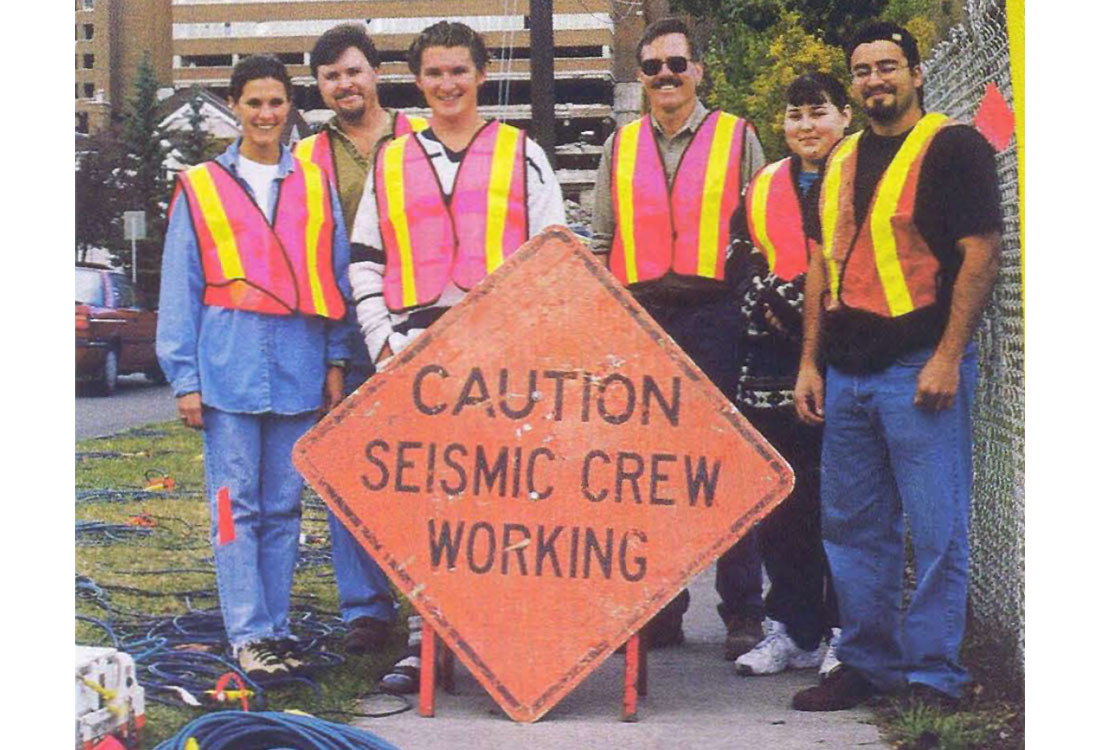
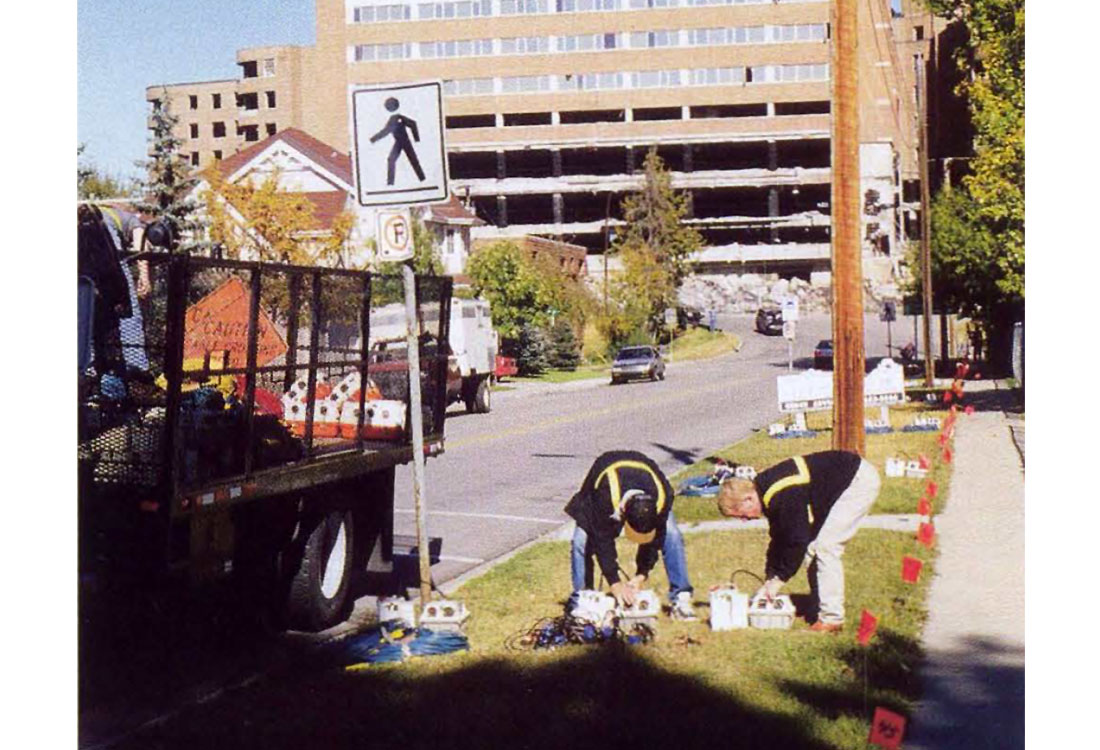
Within a week of the planned implosion of Sunday, October 4, 1998, Veritas DGC Land committed $2 million worth of equipment and five employees North American mechanical manager Darin Silvermagle, senior observer Philip John Moroney, senior field technician Lachlan Brown and field representatives, Chad and David Hillier. Wolf Surveys agreed to send Glen Rideout, Jim Post and Warren Plue for staking the survey site and conducting the positioning (GPS) work. And U of C provided the security.

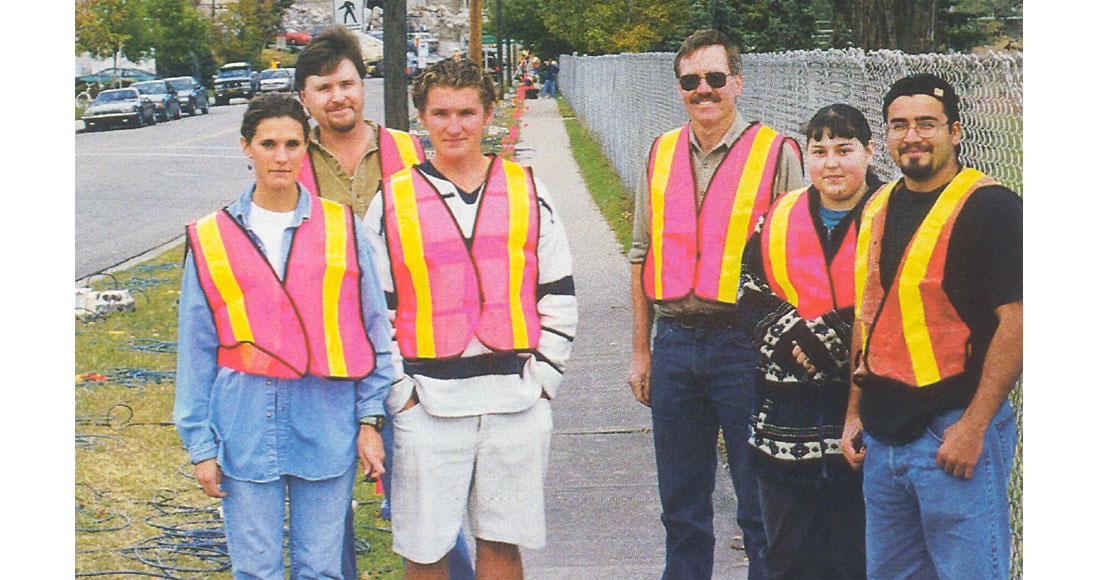
By noon the day before the hospital implosion, Veritas had positioned its truck south of the hospital at the corner of 8th Street north east and Memorial Drive, behind a concrete barrier. According to Lawton, the baseball field located on the south side of the hospital was chosen for its easy road access. About a dozen students from Lawton's undergraduate geophysics 355 class of 80 students, came to lay out the cables and geophones. The afternoon exercise was similar to setting up multi-coloured Christmas lights. Considering the nature of the implosion and the variety of waves likely to be generated, a three-component seismic survey was agreed upon. That is one that measures ground motion along x,y and z-coordinates. In typical seismic surveys with blast echoes coming from beneath the earth's surface, most activity is registered in the vertical direction. In the case of the hospital implosion, the anticipated ground movement would be more like an earthquake and occur along the horizontal axis, radiating from the epicenters of the sequential implosions, which were set off by 2,252 kg. of dynamite.

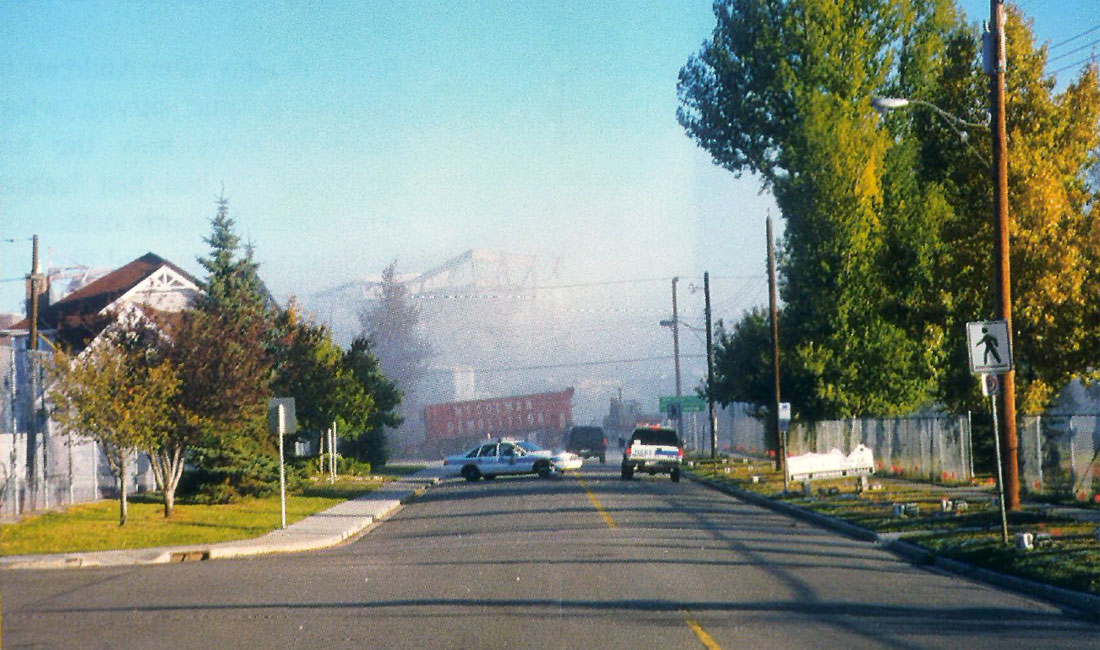
The objectives of the experiment were to get the total magnitude of the blast, the types of energy that moves through the earth, and perhaps, something about the geological structure of the area. Two lines of geophones were set up, the first ran in a north-south direction with the first node about 150 m from the epicenter of one of the implosions. Spaced at 2.2 m apart, sixty geophones were set up along a north-south axis. From the furthermost node from the hospital along this axis, a second line intersected this first line in a east-west direction, forming an L shaped configuration.
The Veritas truck was situated a few meters away from the corner of the L-shaped line configuration. From each element of the geophone, a cable linked the element to extended MRX 1011 boxes. At every sixth node, there were three boxes, each were assigned to one of the x,y or z direction energy sensing elements in the geophones. Through more cable, the boxes were connected to the 24-bit Input/Output System located in the Veritas DGC Land truck.
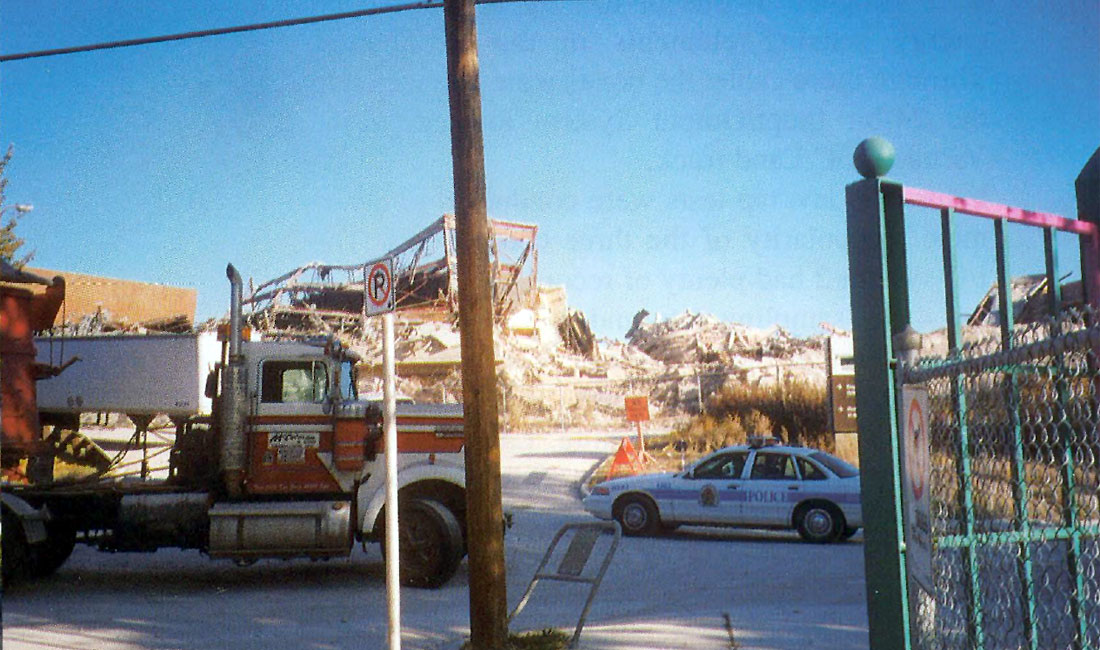
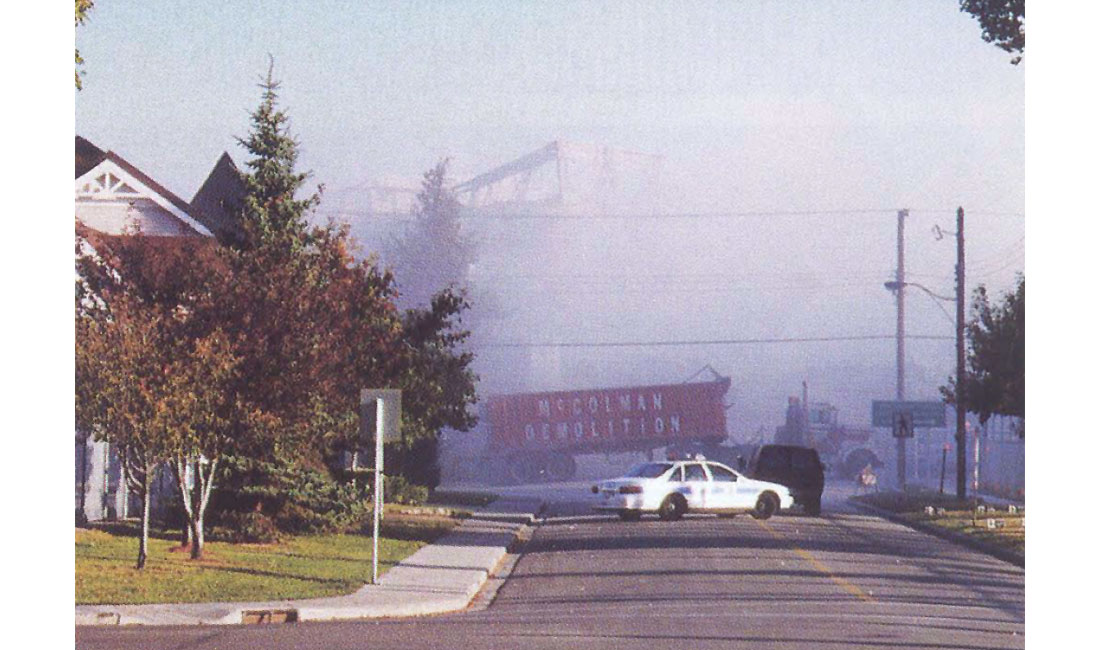
Later that day, tap tests were conducted to determine the polarity of the three components. The I/0 system 2 had plenty of recording capacity for the 4 ms sampling rate and 363 channels used here; although the 90 second test time for the implosion was a little unusual.
By six o'clock in the morning, Lawton, student Andreeff, research technician Eric Gallant and Malcolm Bertram, a U of C geophysics technician, had arrived at the Veritas truck, along with the Veritas field crew. "We weren't certain of the countdown, so we started early," recalls Lawton and the actual experiment ran for 99 seconds, catching the effects of the 19-second series of implosions. Each of the 360 channels recorded approximately 20,000 samples.
Lawton also captured the event on video camera to correlate it with the findings. The extraordinary amount of data that was recorded by Veritas took over a week to sort out. Lawton encountered a few surprises, "We did not seem to see much energy with the building collapse within the first ten seconds when shorter parts of the building fell. It was around 18 seconds when one of the stacks fell down. And in the first 10 seconds, you see the air blasts from the implosions. Another event occurred at 30 -seconds which was unexpected, and this could be some of the settling occurring under the dust clouds." Still, all and all, the results were pretty close to what the team was anticipating.
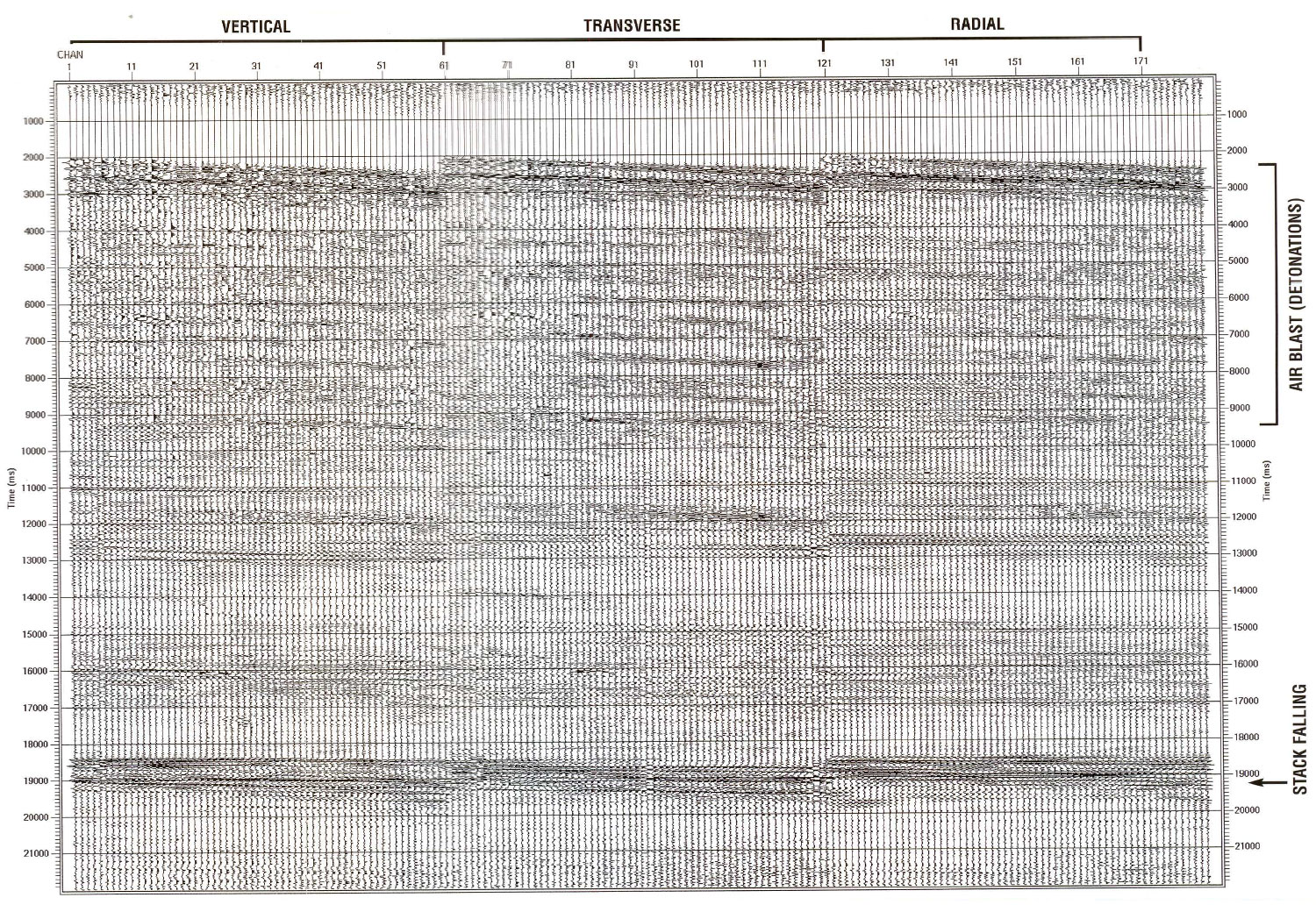











Join the Conversation
Interested in starting, or contributing to a conversation about an article or issue of the RECORDER? Join our CSEG LinkedIn Group.
Share This Article